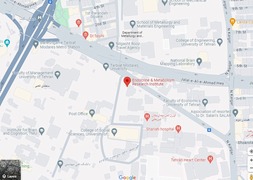Osteoporosis in Iranians: a silent threat to the health of the elderly in Iran
Our bones, the strong pillars of our bodies, naturally weaken over time. But this natural weakness can turn into osteoporosis, a disease that makes bones brittle and prone to painful and debilitating fractures.

A new systematic review published in the journal "Diabetes and Metabolic Disorders" has sounded the alarm about the high prevalence of osteoporosis among the elderly in Iran. According to this study, almost out of every 3 women over 50 years old in Iran and 1 out of every 4 men have this disease (38% prevalence for women and 25% for men over 50 years old).
The high prevalence of osteoporosis in the elderly population represents a serious threat to public health, especially among the elderly. Osteoporosis, also known as the "silent disease," often remains asymptomatic until a sudden fracture occurs. These fractures can lead to severe pain, disability, loss of independence, and even death.
Osteoporosis risk factors Several factors contribute to osteoporosis, including: Deficiency of calcium and vitamin D: These nutrients are necessary to maintain healthy and strong bones. Physical inactivity: Regular exercise helps stimulate the production of new bone cells and maintain bone density. Smoking: Smoking directly weakens bones and increases the risk of osteoporosis. Family history of osteoporosis: If you have a family history of this disease, you are at a higher risk of developing it. Gender: Women naturally have thinner bones than men, and after menopause, their bone density decreases rapidly. Prevention of osteoporosis Although these statistics are alarming, the good news is that osteoporosis is preventable and treatable. By making some simple lifestyle changes, you can significantly reduce your risk of developing this disease: Eating foods rich in calcium and vitamin D: Dairy products, leafy vegetables and fatty fish are good sources of calcium. Sunlight and supplements can also help supply the body with vitamin D. Regular exercise: Aim for at least 30 minutes of moderate-intensity physical activity most days of the week. Walking, cycling, swimming and dancing are good options. Quit smoking: Smoking directly weakens bones and increases the risk of osteoporosis. Regular examination by a doctor: Your doctor can assess your risk of developing osteoporosis by performing bone density tests and prescribe appropriate treatment if needed.




comment